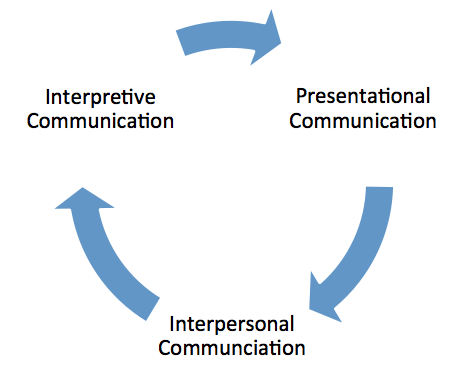
The lessons in the Sonrisas Spanish Curriculum give students an opportunity to interact in all three modes of communication—interpretive, interpersonal, and presentational. The three modes of communication describe how learners use and interact with language in real-world contexts. Here, we present a brief overview of these modes and the types of activities in our curriculum that engage them.
 Interpretive Communication
Interpretive CommunicationIn Interpretive Communication students comprehend written, oral, or visual communication. They do this on a variety of topics without any active negotiation of meaning.
In the Sonrisas Spanish curriculum students engage in this mode of communication by listening to stories, reading brief text excerpts and viewing images in various activities. They also read instructions for portfolio activities.
With Interpersonal Communication students engage in two-way oral or written communication. They use active negotiation of meaning to share information, feelings, and opinions.
This is the meat of the Sonrisas lessons. In every segment—Circle Time, Story Time, Art Time, and Partner Time—students have the opportunity to engage in interpersonal communication with the teacher and their classmates.
Students engage in this mode by singing songs, playing games, and doing lesson activities. They also engage in shared reading, converse about art projects, and complete Partner Time activities.
In Presentational Communication students present spoken or written information which they prepare for an audience. In the Sonrisas lessons students present completed art projects, they share information from Partner Time activities, and they present written work from portfolio activities.
Obviously, beginner students are not going to be able to read long texts, engage in complex conversations, or present large amounts of information. The activities in the Sonrisas lessons are designed so that students learn language concepts that enable them to interact in the three modes of communication at an age-appropriate level.
Through routine, repetition, and spiraling of content, students develop their Spanish. They communicate effectively in order to function in a variety of age-appropriate situations and for multiple purposes. This is a key ingredient of an effective Spanish curriculum for elementary.

